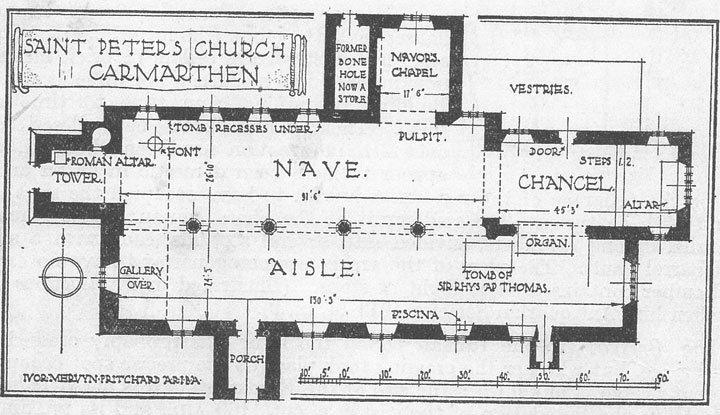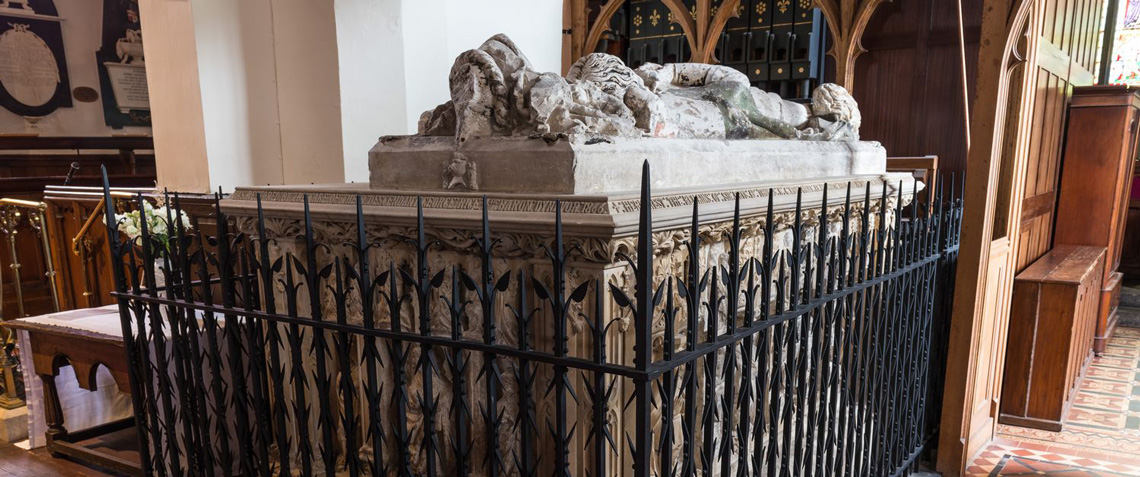Sir Rhys Ap Thomas K.G.
Sir Rhys ap Thomas was born in 1449 the youngest son of Thomas ap Gruffydd ap Nicholas of Newton, Llandeilo and Elizabeth daughter of Sir John Gruffydd of Abermarlais, near Llangadog, Carmarthenshire. During the Wars of the Roses between the Lancastrians and Yorkists the family of Sir Rhys ap Thomas supported the Lancastrians.

In 1461 the Yorkists led by Edward Duke of March defeated the Lancastrian King Henry VI. Following this Edward Duke of March then became King Edward IV. At the Battle of Mortimer’s Cross in 1461, Sir Rhys ap Thomas’ grandfather Gruffydd ap Nicholas was killed. For the family’s support of the defeated Lancastrians they forfeited their extensive lands in the Towy valley, which they later managed to regain.
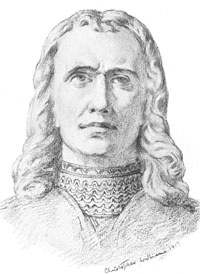
When the Yorkist King Richard III came to the throne in 1483 Sir Rhys ap Thomas initially pledged his allegiance to King Richard III. However, Sir Rhys ap Thomas switched allegiance to the Lancastrian Henry Tudor had been born in Pembroke Castle in 1457.
Sir Rhys ap Thomas was instrumental in the accession of the Lancastrian Henry Tudor to the throne when he became King Henry VII in 1485. King Henry VII was the first of the Tudor Monarchs which later included King Henry VIII; King Edward VI; Queen Mary I and finally Queen Elizabeth I. Between them they reigned for 118 years.
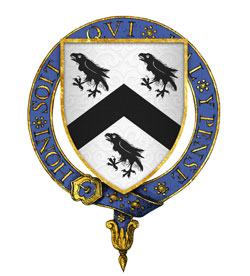
Sir Rhys ap Thomas led an army from West Wales to fight for Henry Tudor at the Battle of Bosworth, Leicestershire. During the battle King Richard III was allegedly killed by Sir Rhys ap Thomas, and Henry Tudor was proclaimed King Henry VII on the battlefield. King Henry VII was crowned at what is now known as Crown Hill near the village of Stoke Golding, Leicestershire.
Sir Rhys ap Thomas was knighted for his services; rewarded with vast estates; and was appointed Chamberlain of South Wales. In recognition of his continued support Sir Rhys ap Thomas was made a Knight of the Garter by King Henry VII on 22nd April 1505. During April 1507 Sir Rhys ap Thomas celebrated becoming a Knight of the Garter by holding The Great Tournament at Carew Castle, Pembrokeshire. The tournament attracted 600 nobles, lasted five days and was the last tournament ever held in Britain.
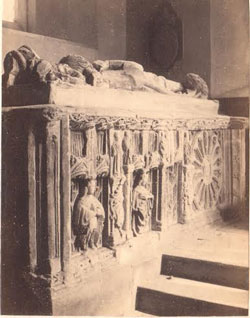
Following the death of King Henry VII in 1509 Sir Rhys ap Thomas went on to serve his son King Henry VIII. In 1513 aged 65, Sir Rhys ap Thomas took part in the invasion of France that was personally led by King Henry VIII. On August 16th 1513 the combined forces of King Henry VIII and Maximilian I, the Holy Roman Emperor, defeated a French force led by Jacques de la Palice at the Battle of the Spurs at Enguinegatte (then Guinegate).
Before the battle Sir Rhys ap Thomas acted as a military advisor and personally took part in the fighting successfully capturing four French Standards. When Sir Rhys ap Thomas died in 1525 he was buried in the church of the Franciscan Friary that formerly stood in Friars’ Park, which is now the site of Wilkinson’s store. Sir Rhys ap Thomas’ first wife was Eva, daughter of Henri ap Gwiliym of Cwrt Henri, Carmarthenshire. Janet, Sir Rhys ap Thomas’ second wife, died in 1535 at Picton Castle, Pembrokeshire. She was alongside him in the Franciscan Friary church. However, after the dissolution of the Friary in 1538 the tomb was moved to St Peter's Church.
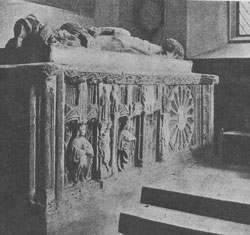
At first the tomb was placed in the north east corner of the chancel. In 1866 the tomb was restored by Lord Dynevor, a direct descendant of Sir Rhys ap Thomas. Following the restoration the tomb was placed beneath the arch between the chancel and the Consistory Court, where the church organ stands today. The tomb was moved to its present location in 1886.
